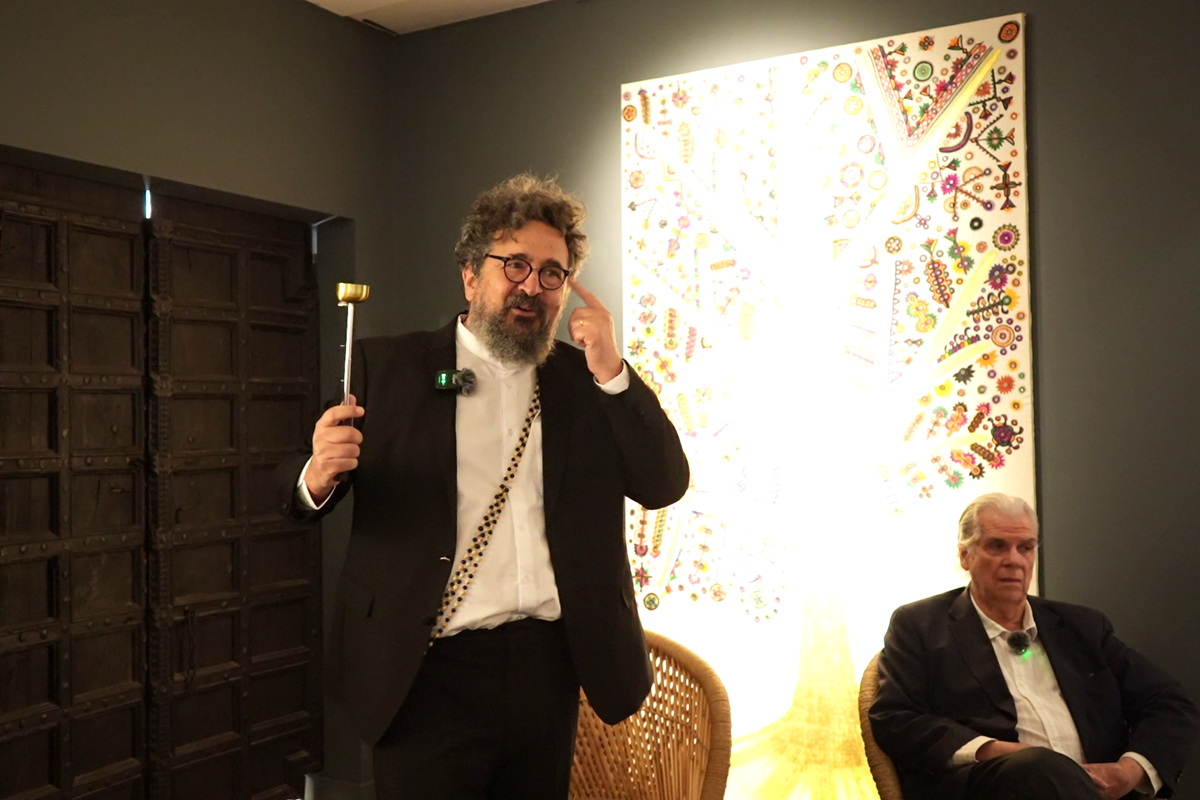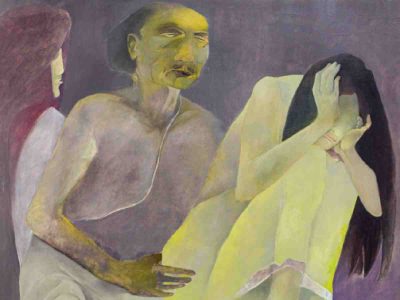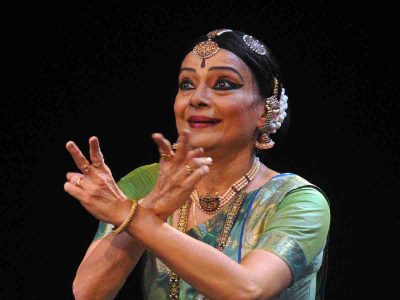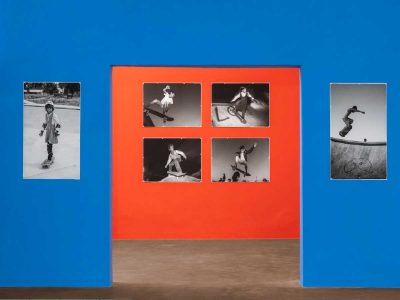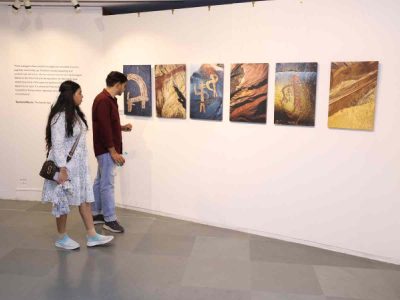The concept of a world without borders, an aspiration for boundless freedom and unity, has been a deeply ingrained sentiment within humanity. For Italian artist Tarshito N Stippoli, this vision crystallised during his time in Pune.
Since 1979, he has collaborated with folk and indigenous artists from over 30 traditions across the subcontinent. From terracotta to iron works, Warli and Sohrai traditions to embroideries from Gujarat and Rajasthan, his repertoire spans a diverse array of mediums and cultural practices. The humility is what has inspired him.
“One of the reasons that pushes me to work with these indigenous or tribal artists is that their ego level is really very low,” he reflects, emphasising the humility and communal spirit that define their approach to art-making.
Transitioning from architecture to the realm of art wasn’t initially on Stippoli’s radar. With a degree in architecture under his belt, Stippoli’s focus was squarely on the structured world of design. However, a transformative journey to India altered his trajectory, catalysing a profound inner awakening.
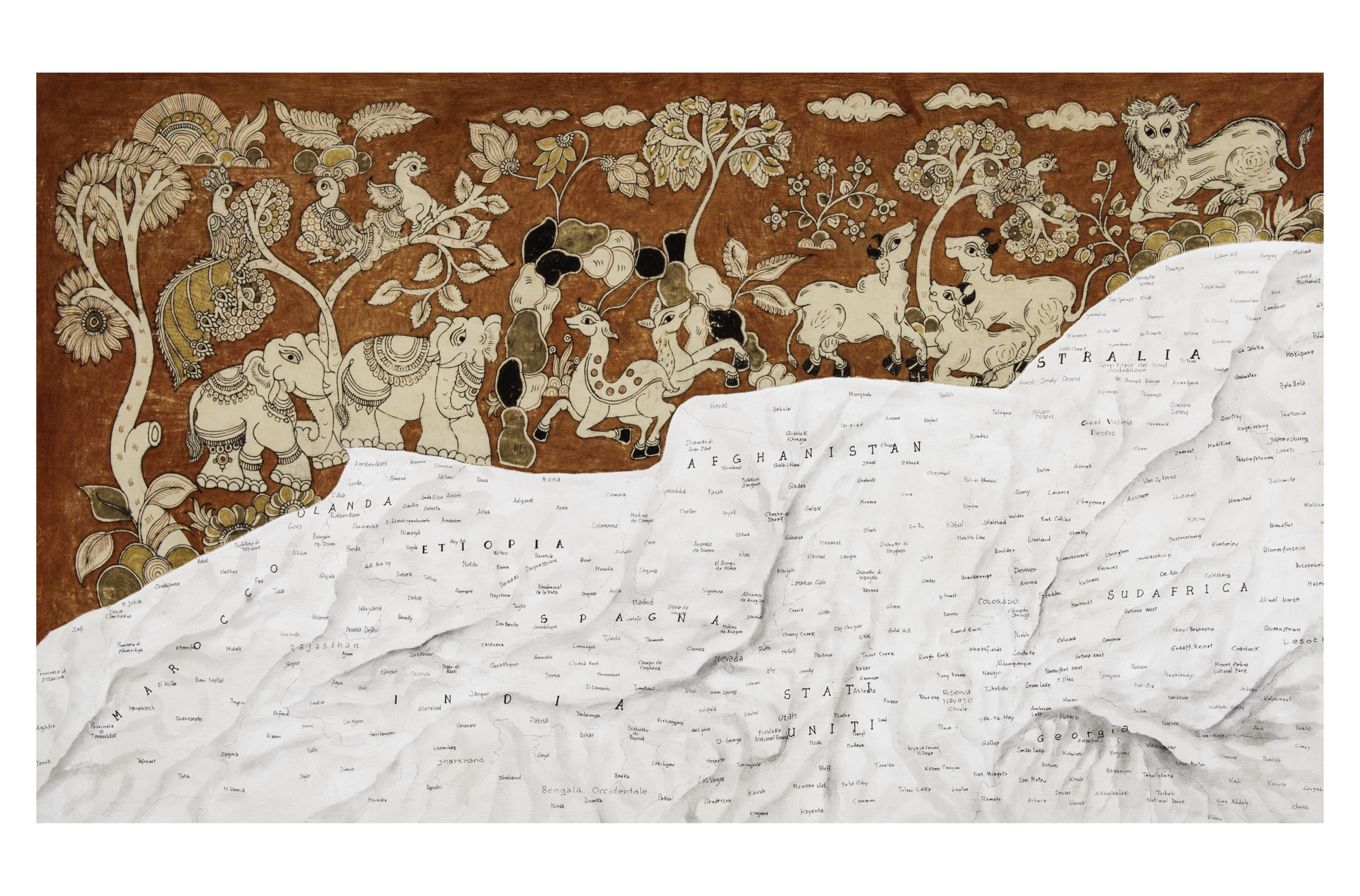
Stippoli’s artwork often serves as a canvas for exploring profound concepts, blurring the lines between the tangible and the intangible. One such painting, depicting a partial black and white map of the world shaped into a tree, invites viewers into a world where symbolism reigns supreme.
In explaining the inspiration behind this captivating piece, Stippoli says, “Trees become living creatures that bring this concept of unity. I imagine these trees, whose leaves form a mixed geography, conveying the concept of freedom with the wind.”
Assimilation of global cultures
Stippoli finds inspiration in the richness of physical landscapes and cultural diversity that adorn our world. From the vibrant hues of South America to the ancient allure of North Africa and the dynamic energy of Asia, Stippoli’s travels serve as a quest to unearth the essence of humanity’s collective heritage.
“For me, culture is spirituality—a recognition of our divinity that transcends superficial differences,” Stippoli reflects.
“Amid the kaleidoscope of traditions, I see a common thread—a symphony of unity that resonates across borders.”
Diving deep into the heart of each culture, Stippoli weaves a story of artistic expression that celebrates this universal bond. Collaborating with artists from diverse backgrounds, he merges his own vision with the indigenous techniques and symbolism of each locale.
“In my creative process, I seek to honour the essence of each nation,” Stippoli explains.
“Whether it’s painting the sacred rivers of India or exploring the intricate artistry of Gond artists in Bhopal, I strive to evoke themes of unity, brotherhood, peace, and love.”
The Creative Process
In the realm of artistic creation, Stippoli’s approach is as diverse as the cultures he explores. When asked about his process of connecting with ancient traditions to reimagine them without boundaries, Stippoli sheds light on the intricate journey that precedes each stroke of his brush.
“In this exhibition, you’ll find a myriad of works spanning many years,” Stippoli begins.
He delves into the intricacies of one particular piece, “Walking in Orissa”, a sprawling 10-metre-long canvas that captures the essence of the coastal landscape. This collaborative masterpiece, blending Italian and Indian artistry, is a testament to the fusion of cultures and the vision of a united world.
Stippoli elaborates on the painstaking dedication of his collaborator, Puspa Rao, a traditional painter versed in the art-form of Patachitra.
“Puspa poured her heart into this project, spending months meticulously bringing the canvas to life,” he explains.
From the pilgrimage of people to the intricate details of nature and architecture, every element reflects a harmonious blend of creativity and cultural heritage.
Yet, Stippoli’s creative journey is not bound by time or technique. He recounts encounters with the Meena community, where the pace is swift and spontaneous.
“Their paintings are gestural, rough, and fast, yet imbued with a profound truth,” he notes.
In contrast, his works in Gujarat, featuring intricate embroidery, demand patience and precision — a testament to the diverse array of artistic expressions that enrich his craft.
In Bikaner, he encountered Raju and Mukesh Swami, masters of miniature art. Across West Bengal, Kerala, and Jharkhand, he immersed himself in the vibrant Patua, Gond, and tribal art traditions, forging meaningful connections with artists like Pravin and Venkat Raman Singh Shyam.
“For me, the essence of a work lies in its truth,” Stippoli emphasises. “Time is secondary—it’s the symbiosis of artist, technique, and symbolism that breathes life into each creation.”
Redesigning the world
In a world rife with conflict and division, Stippoli’s vision offers a beacon of hope — a world without borders, where unity reigns supreme. When asked about the pressing needs of today’s tumultuous world, Stippoli articulates his profound mission to reshape the very fabric of existence.
“My main task is to create a new world, to redesign the planet Earth,” Stippoli declares with unwavering conviction. It’s a task of monumental proportions, challenging the very notion of minimalism as he strives to dismantle the barriers that divide us.
“I envision a world where all nations blend seamlessly, where the rigid lines we’ve grown accustomed to dissolve into a tapestry of cultural harmony,” he explains.
Yet, Stippoli’s vision extends far beyond mere human interaction. In his reimagined world, even the natural world undergoes a profound transformation.
“Animals become sacred beings, each embodying a divine purpose,” he elaborates.
“Trees bear fruits that ring like bells, invoking the presence of our divine essence,” Stippoli describes.
“Their branches stretch skyward, reminding us to empty ourselves and receive the light of spiritual connection.”
Central to this vision is a new humanity — a race of warriors armed not with weapons of destruction, but with qualities of compassion and mindfulness.
“Their weapons are smiles, embraces, and unwavering presence,” asserts Stippoli.
It’s a profound shift in perspective, where strength is measured not by might, but by the depth of one’s humanity.
In Stippoli’s world, the boundaries that divide us are rendered obsolete, replaced by a boundless expanse of unity and understanding. It’s a vision that transcends the constraints of geography and ideology, offering a glimpse of a brighter future where peace and harmony reign supreme.
In his artwork, he portrays a world teeming with biodiversity, where animals take on profound symbolism. Tigers with elongated tails inscribing celestial messages, turtles bearing not only their shells but also the dwelling of the divine — these are just a few examples of the rich imagery he employs.
His latest exhibition in Delhi sees collaboration with 25 Indian indigenous artists, each bringing their unique perspective to the table. In a country as diverse as India, marked by internal border issues, his work discovers common elements that transcend regional divides.

“I work with traditional artists who know very well the value of symbolism and rituality,” he explains, highlighting the depth of understanding these artists bring to the creative process.
“The sacredness of hospitality, for instance, resonates across communities, emphasising the universality of certain values.
“I like to think of continuing to meet native people without too many mental constrictions but full of gratitude to life,” he expresses.

